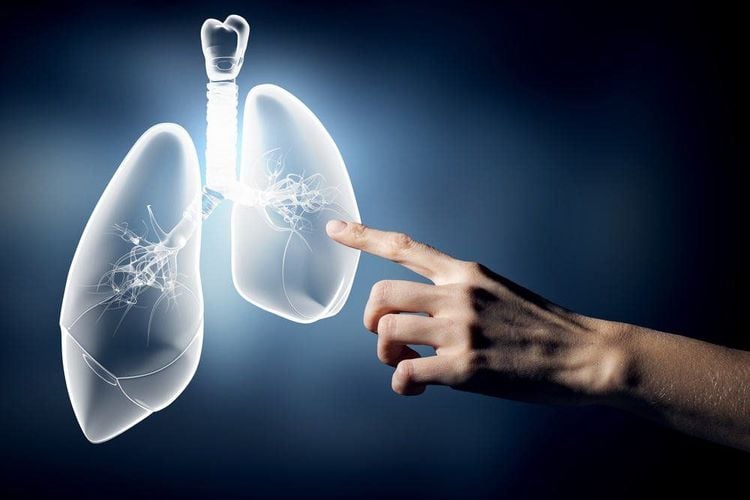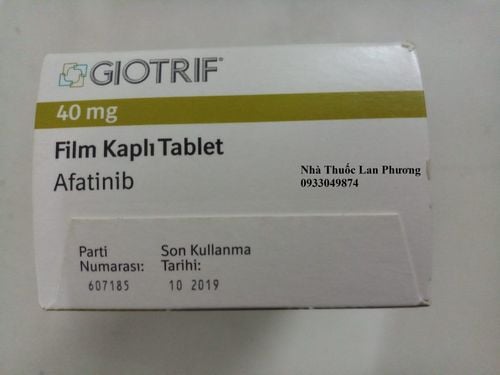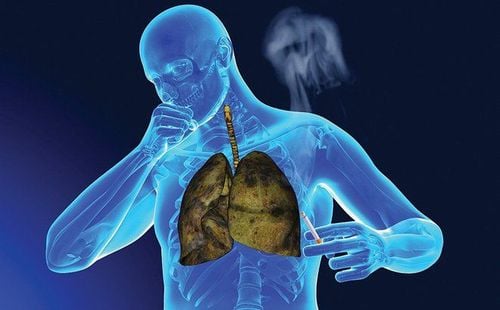This is an automatically translated article.
The article was professionally consulted by Dr. Phan Dinh Thuy Tien - General Internal Medicine - Department of Examination & Internal Medicine - Vinmec Nha Trang International General Hospital.Pulmonary fibrosis is a disease that causes scarring of the lungs and pulmonary fibrosis. Pulmonary fibrosis can lead to shortness of breath and other dangerous complications. Actively learning the knowledge related to this disease to take preventive measures is very necessary.
1. What is pulmonary fibrosis?
Pulmonary fibrosis is a disease in which the tissues in the lungs become damaged, thickened, and stiff because their elasticity has been lost, causing scarring in the lungs. It is the lung scars that block and hinder the patient's breathing activities. The disease also causes other dangerous complications.2. Causes of pulmonary fibrosis
Until now, the exact cause of pulmonary fibrosis has not been determined, but the following factors are considered to cause and increase the likelihood of disease including:Smoking a lot Having some viral infections cause respiratory disease Regularly exposed to or living and working in an environment with air pollution, a lot of dust Being treated and using certain drugs Due to genetics, a family member has pulmonary fibrosis Having the disease Reflux stomach

Lạm dụng thuốc lá sẽ dẫn đến xơ phổi
3. Symptoms of pulmonary fibrosis
Pulmonary fibrosis can cause a number of symptoms such as: Fatigue, muscle and joint pain, dry cough, shortness of breath, unexplained weight loss. In particular, shortness of breath is a typical symptom of pulmonary fibrosis, especially after heavy labor. When this symptom is detected, it means that the disease is already in a severe stage and the damage to the lungs cannot be restored, although the symptoms may have been relieved. Eventually, shortness of breath becomes more severe, even during activities of daily living. Pulmonary fibrosis has different symptoms and progression depending on the health and condition of each person.4. Is pulmonary fibrosis dangerous?
Pulmonary fibrosis is a disease that progresses over time. Symptoms of the disease can be controlled and relieved, but lung damage and scarring cannot be reversed. In addition to hindering breathing, pulmonary fibrosis can cause other dangerous pulmonary fibrosis complications such as:Low blood oxygen levels: Scars in the lungs make breathing more difficult, reduces the amount of oxygen in the blood. When the body is deprived of oxygen, other activities can be seriously affected, even life-threatening. Pulmonary arterial hypertension: Scar tissue in the lungs seriously affects the pulmonary arteries as well as the pulmonary capillaries, causing pulmonary arterial blood pressure to rise, long-term complications of right heart failure, chronic heart failure. Pneumonia, pulmonary embolism, respiratory failure: This is a dangerous complication that occurs in the late stages when the disease progresses to chronic. When blood oxygen levels fall too low, it can cause cardiac arrhythmias, acute respiratory failure on a chronic basis, which may require mechanical ventilation intervention, the risk of death increases. Pulmonary fibrosis is a common disease in patients between the ages of 50 and 70 years. Because the disease seriously affects health, the prognosis of the disease is only 3-5 years on average. Depending on the age of the disease, current health status, severity of symptoms or mildness and progression of the disease, the prognosis of the disease will be different.

Một trong những biến chứng của xơ phổi là viêm phổi
5. Diagnosis and treatment of pulmonary fibrosis
Pulmonary fibrosis has a slow progression and similar to many other lung diseases, so it is difficult to diagnose immediately. The disease can be diagnosed and differentiated from other lung diseases through the following methods:Chest X-ray High resolution computed tomography lung function test Blood gas test Pulmonary pulses of oxygen Lung biopsies A number of tests To date, pulmonary fibrosis has not had a radical treatment method, helping to fully restore lung function. Patients are mainly treated to relieve symptoms, to limit and reduce pneumonia complications, and to protect the function of the lungs and lung tissues, so that the patient can breathe more easily.
Treatment to relieve symptoms of the disease may include therapies such as: medication to reduce inflammation and reduce the formation of lung scars, oxygen therapy to help the person breathe, lung transplantation. Pulmonary fibrosis can cause dangerous complications affecting the health and life of the patient. Therefore, the disease needs to be detected and treated early.
Doctor Thuy Tien has 18 years of experience in medical examination and treatment. Currently working as a General Internal Medicine Doctor, Department of Medical Examination and Internal Medicine, Vinmec Nha Trang International General Hospital.
Please dial HOTLINE for more information or register for an appointment HERE. Download MyVinmec app to make appointments faster and to manage your bookings easily.













